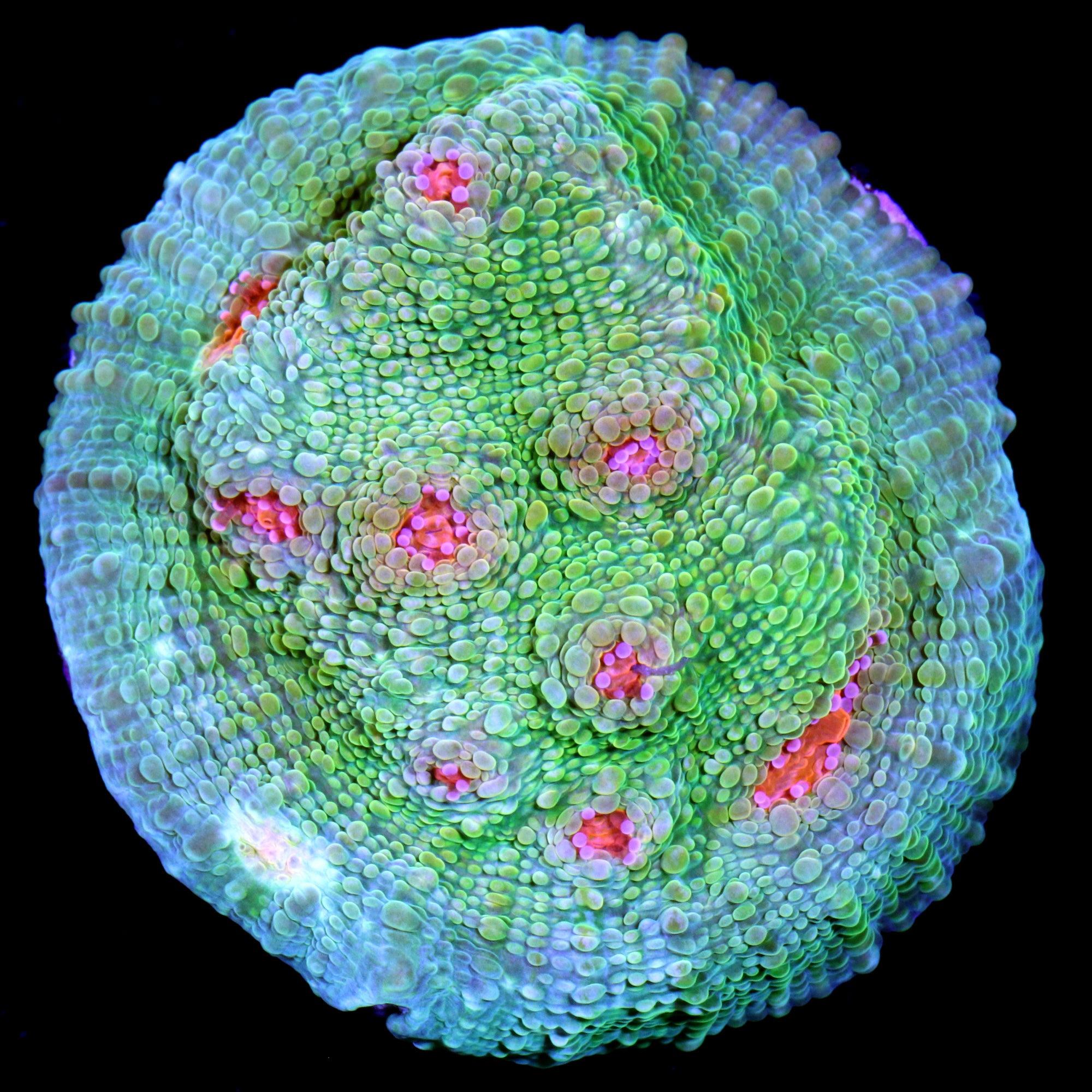Year End Clearance Sale 25% Off All Frags
Free Shipping Over $249 or $29.99 for Orders over $100
Mummy Eye Echinophyllia Chalice Coral
$ 49.99
Please select all options.
How to Care for Mummy Eye Echinophyllia Coral:
(written by Dave Burr)
The Mummy Eye Echinophyllia will bring a good contrast to any reef aquarium as it encrusts over the rock.
Aquaculture:
We have been farming this coral since 2010 here at Vivid Aquariums.
Tentacles:
Echinophyllia & Chalice Corals have sweeper tentacles that come out at night so leave several inches between them and surrounding corals.
Placement:
Mount the Mummy Eye Chalice using IC gel glue, or putty, on an exposed rock in the lower half of the aquarium where it will receive moderate flow and indirect light.
Feeding:
Vivid Aquariums recommends feeding Echinophyllia and Chalice Corals with Oyster-Feast, Roti-Feast, and/or cyclopeeze. Target feeding gets the corals fed using less food while keeping your nitrates and phosphates lower.
Lighting & Flow Requirements:
The Mummy Eye Echinophyllia requires moderate water flow and low to moderate lighting (PAR 80-250) to maintain its color. T5's, Metal Halides, or LED's can all grow Echinophyllia & Chalice Corals when the proper PAR levels are provided. We recommend a 14-20K color spectrum for best coloration.
Facts about Mummy Eye Chalice Coral:
Care Level: Moderate
Lighting Requirements: Low to moderate (PAR 80-250)
Water Flow: Moderate
Aggressiveness: Semi-aggressive
Range: Indo Pacific, Grown in California
Family: Pectiniidae
Water Conditions: 75-80° F; sg 1.024-1.026 (1.025 is ideal); pH 8.1-8.4 Ca 420-440 ppm, Alk 8-9.5 dKH, Mg 1260-1350, Nitrates <10ppm, Phosphates, < .10ppm
Water Chemistry:
It is important that proper calcium (420-440 ppm), alkalinity (8-9.5 dkh - run it 7-8 if you are carbon dosing) , and magnesium levels (1260-1350 ppm) are maintained. Raising magnesium levels gradually up to 1400-1600 ppm can help to combat algae outbreaks, just keep CA and Alk in line as you raise the Mg. Nitrates should be below 10 ppm and phosphates should be below .10 ppm. We recommend doing a water change when Nitrate levels rise to 10 ppm. It is important to replace your phosphate media when phosphates rise to .10 ppm. Media Reactors make the most efficient use of your phosphate media by fluidizing it.
Dosing:
Vivid Aquariums uses and recommends dosing pumps to automate the dosing of additives and keep your levels more constant. A dosing pump can alleviate the chore of manually dosing your aquarium with Ca, Alk, & Mg 2,3, or 4 times per week and will benefit your aquarium by keeping your levels constant through frequent small additions of Ca, Alk, & Mg. Our tanks all progressed when we switched from 3 manual dosings per week to 70 automatic dosings per week and we got a lot more work done.
Category: 25-50, Echinophyllia, echinophyllia-sp, low-to-moderate-lighting, LPS Coral Frags, moderate, Vivid Grown Coral
Type: Corals and Inverts


